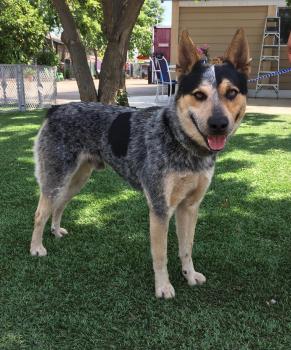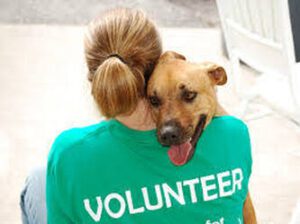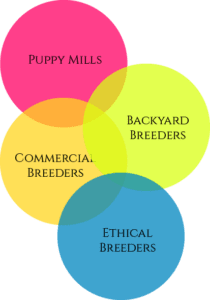Key Takeaways
Adopting an Australian Cattle Dog (ACD) from a breed rescue group offers numerous benefits, including providing a home to a dog in need and receiving a well-screened pet.
-
Australian Cattle Dogs are highly intelligent and require mental stimulation and physical activity.
-
They are known for their loyalty and protective nature, making them great companions for active families.
-
Rescue groups often provide detailed histories and health screenings of the dogs they offer for adoption.
-
Adopting from a rescue group can be a more affordable option compared to purchasing from a breeder.
-
Blue Heelers and Australian Cattle Dogs are the same breed, with differences in coat color.
Adopting Australian Cattle Dogs Through Breed Rescue Groups
Adopting an Australian Cattle Dog through a breed rescue group is a fantastic way to bring a loyal and intelligent pet into your home. These groups specialize in the breed and often have a deep understanding of their needs and characteristics. Most importantly, adopting from a rescue group means giving a second chance to a dog in need of a loving home.

“This Australian cattle dog is up for …” from www.pressenterprise.com and used with no modifications.
Why Rescue Groups are a Great Option
Rescue groups are a great option for several reasons. Firstly, they provide a safe haven for dogs that may have been abandoned, neglected, or surrendered by their previous owners. These groups work tirelessly to rehabilitate and rehome these dogs, ensuring they find suitable families.
Moreover, rescue groups often have a thorough screening process to match dogs with the right homes. They assess the dog’s temperament, health, and behavior to ensure they are placed in environments where they will thrive. This level of care and attention can be reassuring for potential adopters.
Steps to Adopt from a Rescue Group
Adopting an Australian Cattle Dog from a rescue group involves a few important steps:
-
Research: Find reputable rescue groups that specialize in Australian Cattle Dogs. Look for reviews and testimonials from previous adopters.
-
Application: Complete an adoption application form. This will typically include questions about your lifestyle, home environment, and experience with dogs.
-
Interview: Participate in an interview or home visit. This helps the rescue group determine if you are a good fit for the dog you wish to adopt.
-
Meet and Greet: Arrange a meeting with the dog. This allows you to interact with the dog and see if there is a connection.
-
Adoption Fee: Pay the adoption fee, which often covers vaccinations, spaying/neutering, and other medical expenses.
-
Homecoming: Bring your new dog home and provide a loving, stable environment.
Benefits of Adopting from Rescue Groups
Adopting from rescue groups comes with numerous benefits. One significant advantage is the support and resources these groups offer. They often provide guidance on training, behavior, and health care, ensuring you and your new pet have a smooth transition.
Additionally, rescue groups usually have detailed information about the dog’s history and any special needs they may have. This transparency can help you make an informed decision and prepare for any challenges you might face.
Are Australian Cattle Dogs Good Family Dogs?
Australian Cattle Dogs can make excellent family pets, but it’s essential to understand their unique characteristics and needs. These dogs are known for their intelligence, loyalty, and high energy levels. They thrive in active households where they can participate in various physical and mental activities. If you’re considering other pets, you might want to learn about American Staffordshire Terrier breed adoption as well.
Characteristics and Temperament
Australian Cattle Dogs are highly intelligent and alert. They were originally bred for herding cattle, which means they have a strong work ethic and are always ready for action. These dogs are also known for their loyalty and protective nature, making them great companions for families.
However, their herding instinct can sometimes manifest in behaviors like nipping at heels or attempting to herd children and other pets. Early training and socialization are crucial to manage these tendencies and ensure they become well-behaved family members. For more information on adopting similar breeds, check out this American Foxhound breed adoption guide.
Suitability for Families with Children
Australian Cattle Dogs can be wonderful companions for families with children, provided they receive proper training and socialization. Their high energy levels make them great playmates for active kids, and their loyalty means they will form strong bonds with family members.
However, it’s essential to teach children how to interact with the dog respectfully. Supervised playtime and consistent training can help prevent any potential issues and ensure a harmonious relationship between the dog and the children.
Australian Cattle Dogs are incredibly versatile and adaptable, but understanding their temperament and specific needs is crucial for a successful adoption. These dogs are known for their intelligence, loyalty, and high energy levels, making them excellent companions for active families. To learn more about this breed, visit DogTime’s comprehensive guide on Australian Cattle Dogs.
Finding Rescue Groups in the U.S.
Finding reputable rescue groups in the U.S. that specialize in Australian Cattle Dogs is relatively straightforward. Many organizations are dedicated to rescuing and rehoming these wonderful dogs. Some well-known groups include the Australian Cattle Dog Rescue Association (ACDRA) and the Australian Cattle Dog Rescue of Illinois. These groups operate nationwide and often have listings of available dogs on their websites.
It’s essential to do your research and choose a rescue group with a good reputation. Look for groups that provide detailed information about their dogs, including health records and behavioral assessments. Reading reviews and testimonials from previous adopters can also give you a sense of the group’s reliability and commitment to the dogs’ well-being.
Reputable Rescue Groups and Adoption Centers
Several reputable rescue groups and adoption centers specialize in Australian Cattle Dogs. Here are a few to consider:
-
Australian Cattle Dog Rescue Association (ACDRA): ACDRA operates nationwide and focuses on rescuing and rehoming Australian Cattle Dogs. They provide detailed information about each dog and offer support throughout the adoption process.
-
Australian Cattle Dog Rescue of Illinois: This group serves the Midwest and is dedicated to rescuing and rehabilitating Australian Cattle Dogs. They offer a thorough screening process to ensure the dogs are placed in suitable homes.
-
Texas Cattle Dog Rescue: Operating in Texas, this group rescues Australian Cattle Dogs from shelters and provides foster care until they find their forever homes. They also offer training and behavioral support for adopters.
Adoption Process and Requirements
The adoption process from a rescue group typically involves several steps to ensure a good match between the dog and the adopter. Here’s a general overview of what you can expect:
-
Application: Fill out an adoption application form, providing details about your lifestyle, home environment, and experience with dogs.
-
Interview: Participate in an interview or home visit conducted by the rescue group. This helps them understand your suitability as an adopter.
-
Meet and Greet: Arrange a meeting with the dog to see if there is a connection. This step is crucial to ensure compatibility.
-
Adoption Fee: Pay the adoption fee, which usually covers vaccinations, spaying/neutering, and other medical expenses.
-
Homecoming: Bring your new dog home and provide a loving, stable environment. The rescue group may offer ongoing support and resources to help with the transition.
Understanding Blue Heelers and Australian Cattle Dogs
Many people wonder if Blue Heelers and Australian Cattle Dogs are the same breed. The answer is yes, but with some distinctions. Blue Heelers and Red Heelers are both types of Australian Cattle Dogs, differentiated primarily by their coat color. If you are interested in adopting other pets, you might want to look into Amazon Parrot adoption as well.
Blue Heelers have a blue or blue-mottled coat, while Red Heelers have a red or red-mottled coat. Despite these color differences, both types share the same breed characteristics, including intelligence, loyalty, and high energy levels.
Clarifying the Terminology
The term “Blue Heeler” refers specifically to Australian Cattle Dogs with a blue coat, while “Red Heeler” refers to those with a red coat. The term “Heeler” comes from their herding technique, where they nip at the heels of cattle to move them along.
Regardless of the color, both Blue and Red Heelers are considered Australian Cattle Dogs and possess the same traits and behaviors. Understanding this terminology can help you when searching for rescue groups or breeders.
Differences and Similarities
While the primary difference between Blue Heelers and Red Heelers is their coat color, they share many similarities. Both types are known for their:
-
Intelligence: These dogs are highly trainable and excel in obedience and agility activities.
-
Loyalty: Australian Cattle Dogs form strong bonds with their families and are protective of their loved ones.
-
Energy Levels: They require regular physical and mental stimulation to stay happy and healthy.
-
Herding Instinct: Their natural herding ability can sometimes lead to behaviors like nipping at heels, which can be managed with proper training.
Historical Background of the Names
The Australian Cattle Dog’s history dates back to the 19th century when ranchers in Australia needed a robust and hardworking dog to herd cattle in harsh conditions. Early attempts to use English herding dogs failed, as they couldn’t handle the tough environment.
Ranchers then crossbred various dogs, including the Dingo, to develop a breed that could withstand the Australian climate and effectively herd cattle. The resulting dogs were initially known as “Queensland Heelers” or “Blue Heelers” due to their distinctive blue coats.
Over time, the breed became known as the Australian Cattle Dog, recognized for its exceptional herding abilities and resilience. The terms “Blue Heeler” and “Red Heeler” remain popular, especially in regions where these dogs are used for herding.
What Breeds Make an Australian Cattle Dog
The Australian Cattle Dog’s development involved several breeds to achieve the desired traits of intelligence, stamina, and herding ability. Understanding the breed’s lineage can give you a deeper appreciation for their characteristics and behavior.
The creation of the Australian Cattle Dog is a testament to the ingenuity and perseverance of Australian ranchers who needed a dog capable of thriving in tough conditions while performing demanding tasks.
Origin and Development of the Breed
The Australian Cattle Dog’s origin dates back to the early 1800s when Australian ranchers needed a dog capable of handling the demanding task of herding cattle over vast distances. The initial herding dogs brought from England, such as the Smithfield and Old English Sheepdog, were not well-suited for the harsh Australian climate and rugged terrain.
To create a more resilient and effective herding dog, ranchers began crossbreeding these English herding dogs with the native Australian Dingo. The Dingo’s natural endurance, intelligence, and adaptability made it an ideal candidate for improving the breed’s overall performance.
Through selective breeding, the ranchers eventually developed a dog that could handle the tough conditions and effectively herd cattle. This dog became known as the Australian Cattle Dog, celebrated for its strength, agility, and unwavering work ethic.
Key Breeds Involved in Their Lineage
The development of the Australian Cattle Dog involved several key breeds:
-
Smithfield and Old English Sheepdog: These breeds were initially used for herding but lacked the stamina and resilience needed for Australian conditions.
-
Dingo: The native Australian Dingo was introduced to add endurance, intelligence, and adaptability to the breed.
-
Collie: Collies were crossbred to enhance the herding instinct and trainability of the Australian Cattle Dog.
-
Dalmatian: Dalmatians were included in the mix to improve the breed’s compatibility with horses and add a protective nature.
-
Kelpie: The Kelpie, another Australian herding dog, was added to refine the breed’s herding ability and work ethic.
Influence of Dingoes on the Breed
The inclusion of the Dingo in the Australian Cattle Dog’s lineage played a significant role in shaping the breed’s characteristics. Dingoes contributed to the breed’s:
-
Endurance: Dingoes are known for their ability to travel long distances and survive in harsh conditions, traits that were essential for herding cattle in Australia.
-
Intelligence: The Dingo’s natural intelligence and problem-solving skills enhanced the breed’s trainability and adaptability.
-
Resilience: Dingoes are highly resilient and can thrive in challenging environments, a trait that was crucial for the Australian Cattle Dog’s success.
The Dingo’s influence is evident in the Australian Cattle Dog’s physical appearance, with features such as a sturdy build, pricked ears, and a keen, alert expression. Learn more about the American Chinchilla Rabbit breed.
Frequently Asked Questions
Adopting an Australian Cattle Dog can raise several questions. Here are some common queries and their answers to help you make an informed decision. For more detailed information, you can check out this comprehensive guide on Australian Cattle Dogs.
How do I find a reputable rescue group?
Finding a reputable rescue group involves thorough research. Look for groups that specialize in Australian Cattle Dogs and have positive reviews from previous adopters. Reputable groups often provide detailed information about the dogs, including health records and behavioral assessments. You can also ask for recommendations from veterinarians or local dog trainers.
Some well-known rescue groups include the Australian Cattle Dog Rescue Association (ACDRA) and the Australian Cattle Dog Rescue of Illinois. These groups have established reputations and offer support throughout the adoption process.
Are Australian Cattle Dogs aggressive?
Australian Cattle Dogs are not inherently aggressive, but they can exhibit protective and territorial behaviors. Their herding instinct may lead to nipping at heels, which can be mistaken for aggression. Early training and socialization are crucial to manage these tendencies and ensure they become well-behaved family members.
With proper training and a loving environment, Australian Cattle Dogs can be loyal, affectionate, and well-mannered companions.
How much exercise do they require daily?
Australian Cattle Dogs are highly energetic and require regular physical and mental stimulation to stay happy and healthy. They need at least 1-2 hours of exercise daily, including activities like walking, running, playing fetch, and engaging in agility or obedience training.
Providing ample exercise and mental challenges can prevent boredom and destructive behaviors, ensuring a well-balanced and contented dog.
Are Blue Heelers the same as Australian Cattle Dogs?
Yes, Blue Heelers and Australian Cattle Dogs are the same breed. The term “Blue Heeler” specifically refers to Australian Cattle Dogs with a blue or blue-mottled coat, while “Red Heeler” refers to those with a red or red-mottled coat. Both types share the same breed characteristics, including intelligence, loyalty, and high energy levels. If you’re interested in learning about other unique pets, check out Abyssinian Guinea Pigs.
What should I consider before adopting an Australian Cattle Dog?
Before adopting an Australian Cattle Dog, consider the following factors:
-
Activity Level: Ensure you have the time and energy to provide regular exercise and mental stimulation.
-
Training Commitment: Be prepared to invest time in training and socialization to manage their herding instincts and ensure good behavior.
-
Living Environment: Australian Cattle Dogs thrive in homes with access to a yard or open space where they can run and play.
-
Compatibility: Assess if the dog’s temperament and energy levels match your family’s lifestyle and dynamics.
By considering these factors, you can ensure a successful and fulfilling adoption experience for both you and your new furry friend.
Adopting an Australian Cattle Dog through a breed rescue group is a rewarding experience that brings a loyal and intelligent companion into your home. With proper care, training, and understanding of their unique needs, these dogs can become cherished members of your family.


